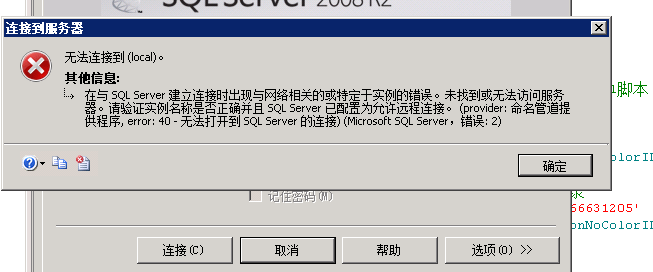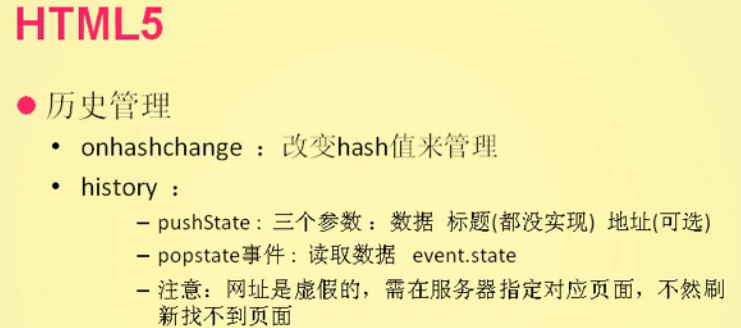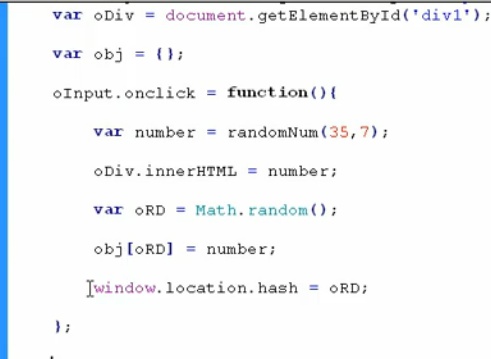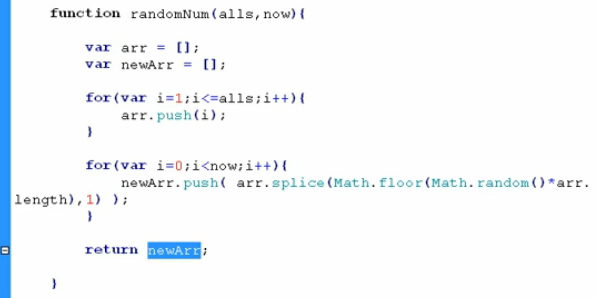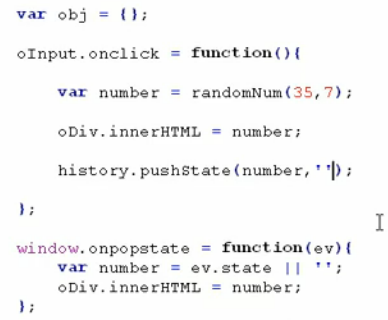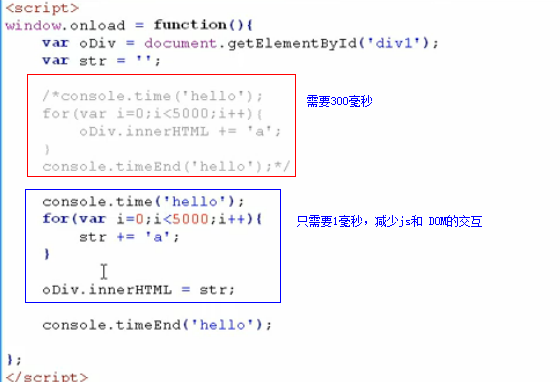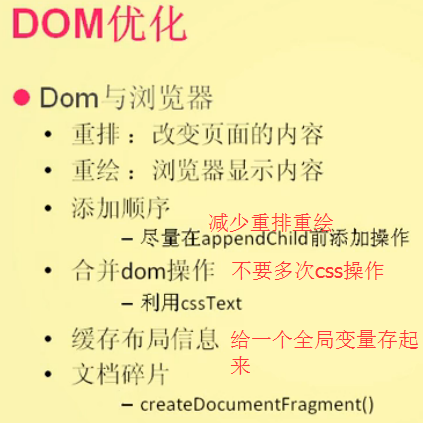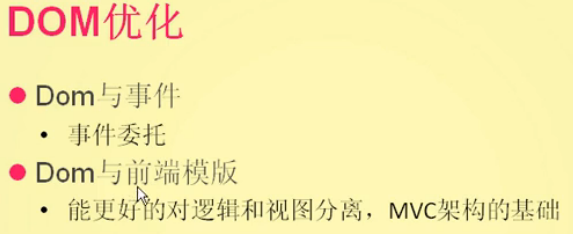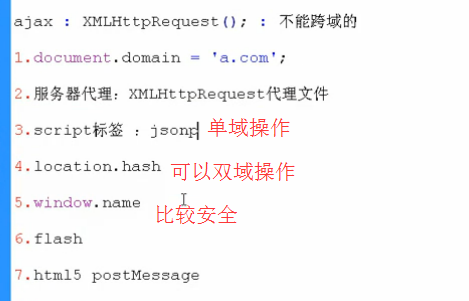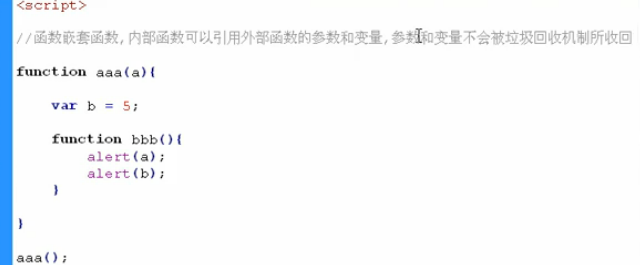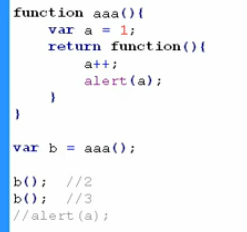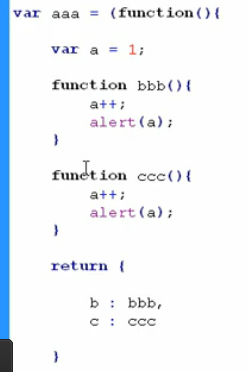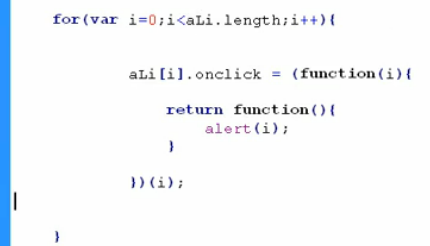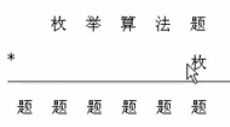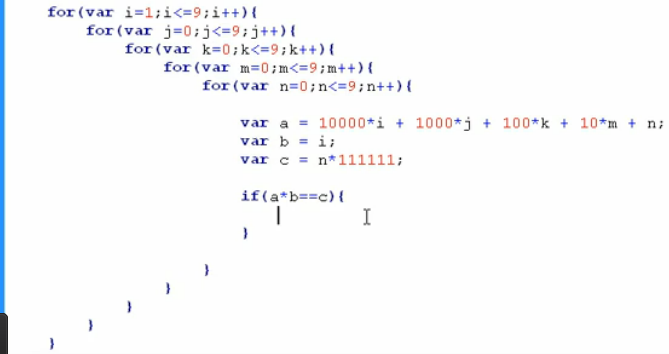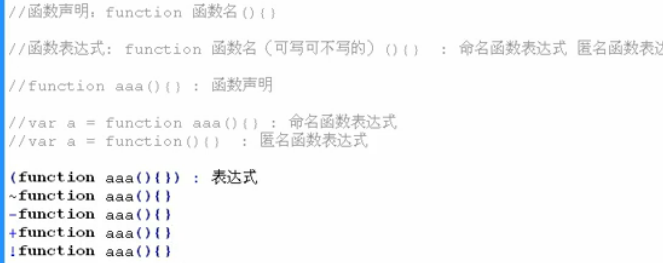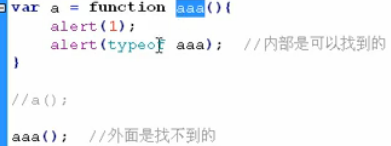spring boot(四):thymeleaf使用详解
spring boot(四):thymeleaf使用详解 - 纯洁的微笑 - 博客园
https://www.cnblogs.com/ityouknow/p/5833560.html
在上篇文章
springboot(二):web综合开发
中简单介绍了一下thymeleaf,这篇文章将更加全面详细的介绍thymeleaf的使用。thymeleaf 是新一代的模板引擎,在spring4.0中推荐使用thymeleaf来做前端模版引擎。
thymeleaf介绍
简单说, Thymeleaf 是一个跟 Velocity、FreeMarker 类似的模板引擎,它可以完全替代 JSP 。相较与其他的模板引擎,它有如下三个极吸引人的特点:
1.Thymeleaf 在有网络和无网络的环境下皆可运行,即它可以让美工在浏览器查看页面的静态效果,也可以让程序员在服务器查看带数据的动态页面效果。这是由于它支持 html 原型,然后在 html 标签里增加额外的属性来达到模板+数据的展示方式。浏览器解释 html 时会忽略未定义的标签属性,所以 thymeleaf 的模板可以静态地运行;当有数据返回到页面时,Thymeleaf 标签会动态地替换掉静态内容,使页面动态显示。
2.Thymeleaf 开箱即用的特性。它提供标准和spring标准两种方言,可以直接套用模板实现JSTL、 OGNL表达式效果,避免每天套模板、该jstl、改标签的困扰。同时开发人员也可以扩展和创建自定义的方言。
3.Thymeleaf 提供spring标准方言和一个与 SpringMVC 完美集成的可选模块,可以快速的实现表单绑定、属性编辑器、国际化等功能。
标准表达式语法
它们分为四类:
- 1.变量表达式
- 2.选择或星号表达式
- 3.文字国际化表达式
- 4.URL表达式
变量表达式
变量表达式即OGNL表达式或Spring EL表达式(在Spring术语中也叫model attributes)。如下所示:
${session.user.name}
它们将以HTML标签的一个属性来表示:
<spanth:text="${book.author.name}">
<lith:each="book : ${books}"> 选择(星号)表达式
选择表达式很像变量表达式,不过它们用一个预先选择的对象来代替上下文变量容器(map)来执行,如下:
*{customer.name}
被指定的object由th:object属性定义:
<divth:object="${book}">
...
<spanth:text="*{title}">...</span>
...
</div> 文字国际化表达式
文字国际化表达式允许我们从一个外部文件获取区域文字信息(.properties),用Key索引Value,还可以提供一组参数(可选).
#{main.title}
#{message.entrycreated(${entryId})} 可以在模板文件中找到这样的表达式代码:
<table>
...
<thth:text="#{header.address.city}">...</th>
<thth:text="#{header.address.country}">...</th>
...
</table> URL表达式
URL表达式指的是把一个有用的上下文或回话信息添加到URL,这个过程经常被叫做URL重写。
@{/order/list}
URL还可以设置参数:
@{/order/details(id=${orderId})}
相对路径:
@{../documents/report}
让我们看这些表达式:
<formth:action="@{/createOrder}">
<ahref="main.html"th:href="@{/main}">变量表达式和星号表达有什么区别吗?
如果不考虑上下文的情况下,两者没有区别;星号语法评估在选定对象上表达,而不是整个上下文
什么是选定对象?就是父标签的值,如下:
<divth:object="${session.user}">
<p>Name: <spanth:text="*{firstName}">Sebastian</span>.</p>
<p>Surname: <spanth:text="*{lastName}">Pepper</span>.</p>
<p>Nationality: <spanth:text="*{nationality}">Saturn</span>.</p>
</div>这是完全等价于:
<divth:object="${session.user}">
<p>Name: <spanth:text="${session.user.firstName}">Sebastian</span>.</p>
<p>Surname: <spanth:text="${session.user.lastName}">Pepper</span>.</p>
<p>Nationality: <spanth:text="${session.user.nationality}">Saturn</span>.</p>
</div>当然,美元符号和星号语法可以混合使用:
<divth:object="${session.user}">
<p>Name: <spanth:text="*{firstName}">Sebastian</span>.</p>
<p>Surname: <spanth:text="${session.user.lastName}">Pepper</span>.</p>
<p>Nationality: <spanth:text="*{nationality}">Saturn</span>.</p>
</div>表达式支持的语法
字面(Literals)
- 文本文字(Text literals):
'one text', 'Another one!',… - 数字文本(Number literals):
0, 34, 3.0, 12.3,… - 布尔文本(Boolean literals):
true, false - 空(Null literal):
null - 文字标记(Literal tokens):
one, sometext, main,…
文本操作(Text operations)
- 字符串连接(String concatenation):
+ - 文本替换(Literal substitutions):
|The name is ${name}|
算术运算(Arithmetic operations)
- 二元运算符(Binary operators):
+, -, *, /, % - 减号(单目运算符)Minus sign (unary operator):
-
布尔操作(Boolean operations)
- 二元运算符(Binary operators):
and, or - 布尔否定(一元运算符)Boolean negation (unary operator):
!, not
比较和等价(Comparisons and equality)
- 比较(Comparators):
>, <, >=, <= (gt, lt, ge, le) - 等值运算符(Equality operators):
==, != (eq, ne)
条件运算符(Conditional operators)
- If-then:
(if) ? (then) - If-then-else:
(if) ? (then) : (else) - Default: (value) ?:
(defaultvalue)
所有这些特征可以被组合并嵌套:
'User is of type ' + (${user.isAdmin()} ? 'Administrator' : (${user.type} ?: 'Unknown'))常用th标签都有那些?
| 关键字 | 功能介绍 | 案例 |
|---|---|---|
| th:id | 替换id |
<input th:id="'xxx' + ${collect.id}"/>
|
| th:text | 文本替换 |
<p th:text="${collect.description}">description</p>
|
| th:utext | 支持html的文本替换 |
<p th:utext="${htmlcontent}">conten</p>
|
| th:object | 替换对象 |
<div th:object="${session.user}">
|
| th:value | 属性赋值 |
<input th:value="${user.name}" />
|
| th:with | 变量赋值运算 |
<div th:with="isEven=${prodStat.count}%2==0"></div>
|
| th:style | 设置样式 |
th:style="'display:' + @{(${sitrue} ? 'none' : 'inline-block')} + ''"
|
| th:onclick | 点击事件 |
th:onclick="'getCollect()'"
|
| th:each | 属性赋值 |
tr th:each="user,userStat:${users}">
|
| th:if | 判断条件 |
<a th:if="${userId == collect.userId}" >
|
| th:unless | 和th:if判断相反 |
<a th:href="@{/login}" th:unless=${session.user != null}>Login</a>
|
| th:href | 链接地址 |
<a th:href="@{/login}" th:unless=${session.user != null}>Login</a> />
|
| th:switch | 多路选择 配合th:case 使用 |
<div th:switch="${user.role}">
|
| th:case | th:switch的一个分支 |
<p th:case="'admin'">User is an administrator</p>
|
| th:fragment | 布局标签,定义一个代码片段,方便其它地方引用 |
<div th:fragment="alert">
|
| th:include | 布局标签,替换内容到引入的文件 |
<head th:include="layout :: htmlhead" th:with="title='xx'"></head> />
|
| th:replace | 布局标签,替换整个标签到引入的文件 |
<div th:replace="fragments/header :: title"></div>
|
| th:selected | selected选择框 选中 |
th:selected="(${xxx.id} == ${configObj.dd})"
|
| th:src | 图片类地址引入 |
<img class="img-responsive" alt="App Logo" th:src="@{/img/logo.png}" />
|
| th:inline | 定义js脚本可以使用变量 |
<script type="text/javascript" th:inline="javascript">
|
| th:action | 表单提交的地址 |
<form action="subscribe.html" th:action="@{/subscribe}">
|
| th:remove | 删除某个属性 |
<tr th:remove="all"> 1.all:删除包含标签和所有的孩子。2.body:不包含标记删除,但删除其所有的孩子。3.tag:包含标记的删除,但不删除它的孩子。4.all-but-first:删除所有包含标签的孩子,除了第一个。5.none:什么也不做。这个值是有用的动态评估。
|
| th:attr | 设置标签属性,多个属性可以用逗号分隔 | 比如
th:attr="src=@{/image/aa.jpg},title=#{logo}"
,此标签不太优雅,一般用的比较少。 |
还有非常多的标签,这里只列出最常用的几个,由于一个标签内可以包含多个th:x属性,其生效的优先级顺序为:
include,each,if/unless/switch/case,with,attr/attrprepend/attrappend,value/href,src ,etc,text/utext,fragment,remove。
几种常用的使用方法
1、赋值、字符串拼接
<pth:text="${collect.description}">description</p>
<spanth:text="'Welcome to our application, ' + ${user.name} + '!'">字符串拼接还有另外一种简洁的写法
<spanth:text="|Welcome to our application, ${user.name}!|">2、条件判断 If/Unless
Thymeleaf中使用th:if和th:unless属性进行条件判断,下面的例子中,
<a>
标签只有在
th:if
中条件成立时才显示:
<ath:if="${myself=='yes'}"> </i> </a>
<ath:unless=${session.user!=null}th:href="@{/login}">Login</a>th:unless于th:if恰好相反,只有表达式中的条件不成立,才会显示其内容。
也可以使用
(if) ? (then) : (else)
这种语法来判断显示的内容
3、for 循环
<trth:each="collect,iterStat : ${collects}">
<thscope="row"th:text="${collect.id}">1</th>
<td>
<imgth:src="${collect.webLogo}"/>
</td>
<tdth:text="${collect.url}">Mark</td>
<tdth:text="${collect.title}">Otto</td>
<tdth:text="${collect.description}">@mdo</td>
<tdth:text="${terStat.index}">index</td>
</tr>iterStat称作状态变量,属性有:
- index:当前迭代对象的index(从0开始计算)
- count: 当前迭代对象的index(从1开始计算)
- size:被迭代对象的大小
- current:当前迭代变量
- even/odd:布尔值,当前循环是否是偶数/奇数(从0开始计算)
- first:布尔值,当前循环是否是第一个
- last:布尔值,当前循环是否是最后一个
4、URL
URL在Web应用模板中占据着十分重要的地位,
需要特别注意的是Thymeleaf对于URL的处理是通过语法@{
...}来处理的。
如果需要Thymeleaf对URL进行渲染,那么务必使用th:href,th:src等属性,下面是一个例子
<!-- Will produce 'http://localhost:8080/standard/unread' (plus rewriting) -->
<ath:href="@{/standard/{type}(type=${type})}">view</a>
<!-- Will produce '/gtvg/order/3/details' (plus rewriting) -->
<ahref="details.html"th:href="@{/order/{orderId}/details(orderId=${o.id})}">view</a>设置背景
<divth:style="'background:url(' + @{/<path-to-image>} + ');'"></div>根据属性值改变背景
<divclass="media-object resource-card-image"th:style="'background:url(' + @{(${collect.webLogo}=='' ? 'img/favicon.png' : ${collect.webLogo})} + ')'"></div>几点说明:
- 上例中URL最后的
(orderId=${o.id})
表示将括号内的内容作为URL参数处理,该语法避免使用字符串拼接,大大提高了可读性 @{...}
表达式中可以通过
{orderId}
访问Context中的orderId变量@{/order}
是Context相关的相对路径,在渲染时会自动添加上当前Web应用的Context名字,假设context名字为app,那么结果应该是/app/order
5、内联js
内联文本:[[...]]内联文本的表示方式,使用时,必须先用th:inline="text/javascript/none"激活,th:inline可以在父级标签内使用,甚至作为body的标签。内联文本尽管比th:text的代码少,不利于原型显示。
<script th:inline="javascript">
/*<![CDATA[*/
...
var username = /*[[${sesion.user.name}]]*/ 'Sebastian';
var size = /*[[${size}]]*/ 0;
...
/*]]>*/
</script>js附加代码:
/*[+var msg = 'This is a working application';+]*/js移除代码:
/*[- */
var msg = 'This is a non-working template';
/* -]*/6、内嵌变量
为了模板更加易用,Thymeleaf还提供了一系列Utility对象(内置于Context中),可以通过#直接访问:
- dates :
java.util.Date的功能方法类。 - calendars :
类似#dates,面向java.util.Calendar - numbers :
格式化数字的功能方法类 - strings :
字符串对象的功能类,contains,startWiths,prepending/appending等等。 - objects:
对objects的功能类操作。 - bools:
对布尔值求值的功能方法。 - arrays:
对数组的功能类方法。 - lists:
对lists功能类方法 - sets
- maps
...
下面用一段代码来举例一些常用的方法:
dates
/*
* Format date with the specified pattern
* Also works with arrays, lists or sets
*/
${#dates.format(date, 'dd/MMM/yyyy HH:mm')}
${#dates.arrayFormat(datesArray, 'dd/MMM/yyyy HH:mm')}
${#dates.listFormat(datesList, 'dd/MMM/yyyy HH:mm')}
${#dates.setFormat(datesSet, 'dd/MMM/yyyy HH:mm')}
/*
* Create a date (java.util.Date) object for the current date and time
*/
${#dates.createNow()}
/*
* Create a date (java.util.Date) object for the current date (time set to 00:00)
*/
${#dates.createToday()}strings
/*
* Check whether a String is empty (or null). Performs a trim() operation before check
* Also works with arrays, lists or sets
*/
${#strings.isEmpty(name)}
${#strings.arrayIsEmpty(nameArr)}
${#strings.listIsEmpty(nameList)}
${#strings.setIsEmpty(nameSet)}
/*
* Check whether a String starts or ends with a fragment
* Also works with arrays, lists or sets
*/
${#strings.startsWith(name,'Don')} // also array*, list* and set*
${#strings.endsWith(name,endingFragment)} // also array*, list* and set*
/*
* Compute length
* Also works with arrays, lists or sets
*/
${#strings.length(str)}
/*
* Null-safe comparison and concatenation
*/
${#strings.equals(str)}
${#strings.equalsIgnoreCase(str)}
${#strings.concat(str)}
${#strings.concatReplaceNulls(str)}
/*
* Random
*/
${#strings.randomAlphanumeric(count)}使用thymeleaf布局
使用thymeleaf布局非常的方便
定义代码片段
<footerth:fragment="copy">
© 2016
</footer>在页面任何地方引入:
<body>
<divth:include="footer :: copy"></div>
<divth:replace="footer :: copy"></div>
</body>th:include 和 th:replace区别,include只是加载,replace是替换
返回的HTML如下:
<body>
<div> © 2016 </div>
<footer>© 2016 </footer>
</body>下面是一个常用的后台页面布局,将整个页面分为头部,尾部、菜单栏、隐藏栏,点击菜单只改变content区域的页面
<bodyclass="layout-fixed">
<divth:fragment="navbar"class="wrapper"role="navigation">
<divth:replace="fragments/header :: header">Header</div>
<divth:replace="fragments/left :: left">left</div>
<divth:replace="fragments/sidebar :: sidebar">sidebar</div>
<divlayout:fragment="content"id="content"></div>
<divth:replace="fragments/footer :: footer">footer</div>
</div>
</body>任何页面想使用这样的布局值只需要替换中见的 content模块即可
<htmlxmlns:th="http://www.thymeleaf.org"layout:decorator="layout">
<body>
<sectionlayout:fragment="content">
...也可以在引用模版的时候传参
<headth:include="layout :: htmlhead"th:with="title='Hello'"></head>layout 是文件地址,如果有文件夹可以这样写 fileName/layout:htmlhead
htmlhead 是指定义的代码片段 如
th:fragment="copy"
源码案例
这里有一个开源项目几乎使用了这里介绍的所有标签和布局,大家可以参考:
cloudfavorites
Thymeleaf
是现代化服务器端的Java模板引擎,不同与JSP和FreeMarker,Thymeleaf的语法更加接近HTML,并且也有不错的扩展性。详细资料可以浏览
官网
。本文主要介绍Thymeleaf模板的使用说明。
模板(template fragments)
定义和引用模板
日常开发中,我们经常会将导航栏,页尾,菜单等部分提取成模板供其它页面使用。
在Thymeleaf 中,我们可以使用
th:fragment
属性来定义一个模板。
我们可以新建一个简单的页尾模板,如:/WEB-INF/templates/footer.html,内容如下:
<!DOCTYPE html SYSTEM "http://www.thymeleaf.org/dtd/xhtml1-strict-thymeleaf-4.dtd">
<html xmlns="http://www.w3.org/1999/xhtml"
xmlns:th="http://www.thymeleaf.org">
<body>
<div th:fragment="copyright">
© 2016 xxx
</div>
</body>
</html>上面定义了一个叫做
copyright
的片段,接着我们可以使用
th:include
或者
th:replace
属性来使用它:
<body>
...
<div th:include="footer :: copyright"></div>
</body>其中th:include中的参数格式为templatename::[domselector],
其中templatename是模板名(如footer),domselector是可选的dom选择器。如果只写templatename,不写domselector,则会加载整个模板。
当然,这里我们也可以写表达式:
<div th:include="footer :: (${user.isAdmin}? #{footer.admin} : #{footer.normaluser})"></div>模板片段可以被包含在任意
th:*
属性中,并且可以使用目标页面中的上下文变量。
不通过th:fragment引用模板
通过强大的dom选择器,我们可以在不添加任何Thymeleaf属性的情况下定义模板:
...
<div id="copy-section">
© xxxxxx
</div>
...通过dom选择器来加载模板,如id为copy-section
<body>
...
<div th:include="footer :: #copy-section">
</div>
</body>th:include 和 th:replace区别
th:include 是加载模板的内容,而th:replace则会替换当前标签为模板中的标签
例如如下模板:
<footer th:fragment="copy">
© 2016
</footer>我们通过th:include 和 th:replace来加载模板
<body>
<div th:include="footer :: copy"></div>
<div th:replace="footer :: copy"></div>
</body>返回的HTML如下:
<body>
<div> © 2016 </div>
<footer>© 2016 </footer>
</body>模板参数配置
th:fragment定义模板的时候可以定义参数:
<div th:fragment="frag (onevar,twovar)">
<p th:text="${onevar} + ' - ' + ${twovar}">...</p>
</div>在 th:include 和 th:replace中我们可以这样传参:
<div th:include="::frag (${value1},${value2})">...</div>
<div th:include="::frag (onevar=${value1},twovar=${value2})">...</div>此外,定义模板的时候签名也可以不包括参数:
<div th:fragment="frag">
,我们任然可以通过
<div th:include="::frag (onevar=${value1},twovar=${value2})">...</div>
这种方式调用模板。这其实和
<div th:include="::frag" th:with="onevar=${value1},twovar=${value2}">
起到一样的效果
th:assert 断言
我们可以通过th:assert来方便的验证模板参数
<header th:fragment="contentheader(title)" th:assert="${!#strings.isEmpty(title)}">...</header>
th:remove 删除代码
假设我们有一个产品列表模板:
<table>
<tr>
<th>NAME</th>
<th>PRICE</th>
<th>IN STOCK</th>
<th>COMMENTS</th>
</tr>
<tr th:each="prod : ${prods}" th:class="${prodStat.odd}? 'odd'">
<td th:text="${prod.name}">Onions</td>
<td th:text="${prod.price}">2.41</td>
<td th:text="${prod.inStock}? #{true} : #{false}">yes</td>
<td>
<span th:text="${#lists.size(prod.comments)}">2</span> comment/s
<a href="comments.html"
th:href="@{/product/comments(prodId=${prod.id})}"
th:unless="${#lists.isEmpty(prod.comments)}">view</a>
</td>
</tr>
</table>这时一个很常规的模板,但是,当我们直接在浏览器里面打开它(不(不使用Thymeleaf ),它实在不是一个很好的原型。因为它的表格中只有一行,而我们的原型需要更饱满的表格。
如果我们直接添加了多行,原型是没有问题了,但通过Thymeleaf输出的HTML又包含了这些事例行。
这时通过th:remove属性,可以帮我们解决这个两难的处境,
<table>
<tr>
<th>NAME</th>
<th>PRICE</th>
<th>IN STOCK</th>
<th>COMMENTS</th>
</tr>
<tr th:each="prod : ${prods}" th:class="${prodStat.odd}? 'odd'">
<td th:text="${prod.name}">Onions</td>
<td th:text="${prod.price}">2.41</td>
<td th:text="${prod.inStock}? #{true} : #{false}">yes</td>
<td>
<span th:text="${#lists.size(prod.comments)}">2</span> comment/s
<a href="comments.html"
th:href="@{/product/comments(prodId=${prod.id})}"
th:unless="${#lists.isEmpty(prod.comments)}">view</a>
</td>
</tr>
<tr class="odd" th:remove="all">
<td>Blue Lettuce</td>
<td>9.55</td>
<td>no</td>
<td>
<span>0</span> comment/s
</td>
</tr>
<tr th:remove="all">
<td>Mild Cinnamon</td>
<td>1.99</td>
<td>yes</td>
<td>
<span>3</span> comment/s
<a href="comments.html">view</a>
</td>
</tr>
</table>其中th:remove的参数有如下几种:
- all 删除当前标签和其内容和子标签
- body 不删除当前标签,但是删除其内容和子标签
- tag 删除当前标签,但不删除子标签
- all-but-first 删除除第一个子标签外的其他子标签
- none 啥也不干
当然,我们也可以通过表达式来传参,
<a href="/something" th:remove="${condition}? tag : none">Link text not to be removed</a>
以上为Thymeleaf中模板的一些用法,各位看官请点赞。


